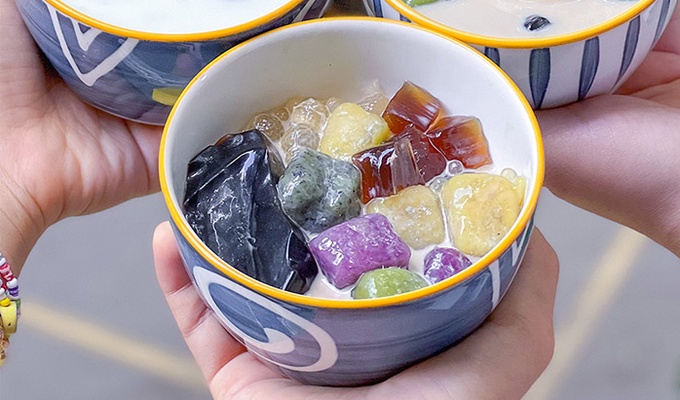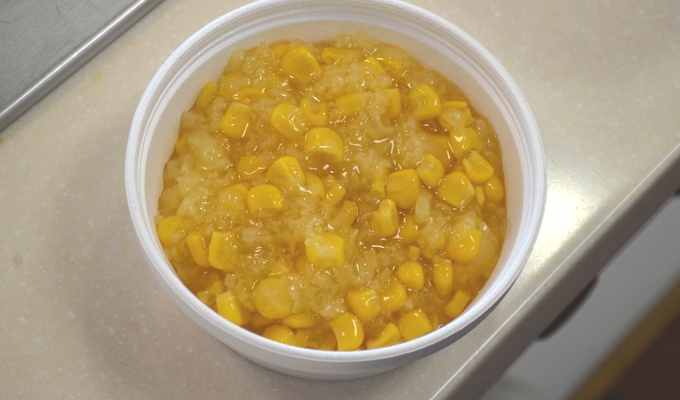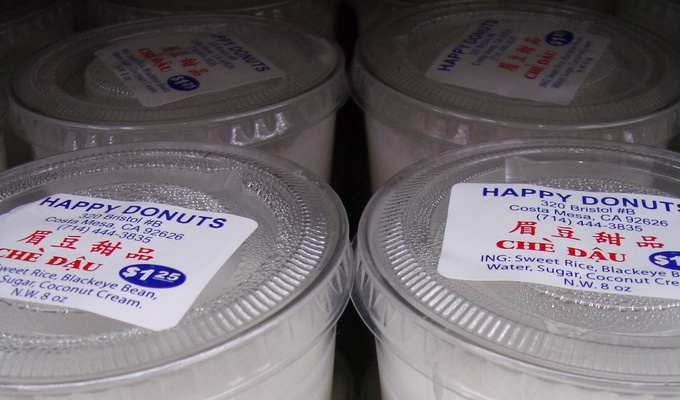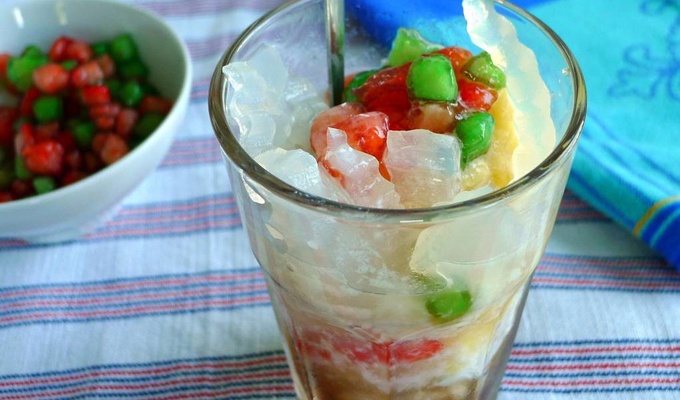Chè is a category of traditional Vietnamese desserts that encompasses a wide variety of sweet soups, puddings, and drinks. They are enjoyed throughout Vietnam and cover a wide range of flavors, textures, and ingredients. Chè can be served hot or cold, and eaten with a bowl and spoon or drunk from a glass. Typically, Each variety of chè is designated by a descriptive word or phrase that follows the word chè, such as chè đậu đỏ (literally "red bean chè").
In northern Vietnam, chè is also the word for the tea plant. Tea is also known as nước chè in the North or more commonly trà in both regions.
The Chinese category of sweet soups called tong sui are very similar to chè.
There are an enormous number of chè variants, subject only to the creativity of local chefs.
Types of Chè (a partial list)
Chè Ba Màu (Three-Color Dessert): A visually striking dessert made with three distinct layers — mung beans, red beans, and pandan-flavored jelly — topped with crushed ice and coconut milk.
Chè Đậu Đen (Black Bean Soup): Similar to red bean soup but made with black (turtle) beans, this dessert is sweetened and often topped with a layer of coconut milk. One of the most popular varieties of chè, especially in northern Vietnam.
Chè Thái: A rich and creamy dessert that originates from Thailand but has been adapted into Vietnamese cuisine. It typically includes a mix of fruits like jackfruit and lychee, along with chewy jellies, served in sweetened coconut milk.
Chè Đậu Đỏ (Red Bean Soup): Soft-cooked red beans, sugar, and coconut milk, sometimes garnished with sesame seeds.
Chè Đậu Xanh (Mung Bean Soup): Mung beans that have been cooked until soft, often flavored with pandan leaves and served with coconut milk.
Chè Bắp (Sweet Corn Pudding): A creamy pudding made from sweet corn kernels cooked with coconut milk and sugar, often thickened with tapioca starch for added texture.
Chè Trôi Nước: Glutinous rice balls filled with sweet mung bean paste, served in a warm, sweet ginger syrup. This dessert is often enjoyed during traditional celebrations and festivals.
Chè Chuối (Banana and Coconut Pudding): Ripe bananas, tapioca pearls, and coconut milk, simmered together until the flavors meld into a rich, sweet pudding.
Chè Thập Cẩm (Mixed Sweet Soup): A combination dessert that includes a variety of ingredients like beans, jelly, fruits, and sticky rice, all layered in a glass and topped with coconut milk and crushed ice.
Chè Lam (Sticky Rice Ginger Peanut Bars): Soft bars of popped sticky rice, molasses, malt, ginger, cardamom, and peanuts, traditionally prepared for guests during the Tet New Year celebration.
Chè Sương Sa Hạt Lựu (Mock Pomegranate Seeds Dessert): Water chestnut pieces coated in tapioca flour, giving them a jelly-like texture, combined with colorful jellies and coconut milk.
Chè Khoai Môn (Taro Pudding): Taro chunks, sometimes combined with other ingredients like tapioca pearls or sweet potatoes, cooked in sweetened coconut milk.
Chè Xoài (Mango Sago): Ripe mango chunks, sago pearls, and sweetened coconut milk, offering a mix of creamy and chewy textures.



